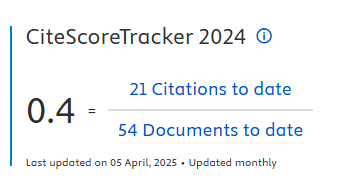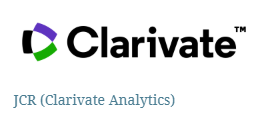The competitiveness ranking of brazilian states and an analysis on the quantity of patents and their public policies for the innovation pillar
DOI:
https://doi.org/10.5585/2023.23470Keywords:
ranking; federal states; innovation; patents; public policies.Abstract
Objective of the study: To evaluate in a statistical, temporal and comparative way, the competitiveness among states of the federation. Using as a metric, the volume of patents and public policies developed in the states. Being a reference for a practical and effective scenario, of solutions for a regional socio-economic development, with less discrepancies and a higher degree of solution. Having its base based on the innovation pillar of the competitiveness ranking among the states.
Methodology: The study was conducted on a base of scientific journals and statistical patent reports via the National Institute of Industrial Property and the Orbit system, in addition to the technology transfer contracts registered in Brazil. Also used was the copy of the year 2021 of the competitiveness ranking among Brazilian states.
Main Results: It was possible through the collected data the influence and importance measured through the innovation pillar for the competitiveness ranking among Brazilian states. The metric revealed the performance among the Brazilian federative units ranked there, identifying the possible correlation present between public policies for innovation, as well as the volume of production and patent protection. Three scales of observation were considered: 1) states in the best position in the ranking; 2) states in an intermediate position in the ranking, such as the state of Rio de Janeiro, currently seventeenth in the ranking; and 3) states in the worst positions, such as Acre and Roraima, currently twenty-sixth and seventh, respectively.
Theoretical/methodological contributions: We sought to contribute with studies based on statistical analysis, as well as the collection of legislation that promotes public policies for innovation. And contributions that generate opportunities for deeper analysis to search for solutions not only parallel to the concrete cases, but also to contribute to the Brazilian states, but that it is possible to gradually reduce their disparities among themselves, with regard to the search for the development of local innovation.
Contributions of the association/management: It is hoped that this research will contribute to the study and exploitation of new opportunities, as well as proposals and possible solutions that can contribute to the improvement of a national innovation scenario.
Downloads
References
ALVARADO, R. U. (2009). Elitismo na literatura sobre a produtividade dos autores. 38 (2), 69–79. https://doi.org/10.1590/S0100-19652009000200006
Araujo, V. M. R. H. de. (1984). Uso da informação contida em patentes nos países em desenvolvimento. http://ridi.ibict.br/handle/123456789/391
BOCHI, F., & MOURA, A. M. ([s.d.]). Patentes em células-tronco: Suas principais características e análise de citação. v. 26 (2).
Bonavides, P. (2013). DO ESTADO LIBERAL AO ESTADO SOCIAL (11a). Malheiros.
Confederação Nacional da Indústria, C. (2020). O marco legal de ciência, tecnologia e inovação dos estados e do Distrito Federal: Situação atual e recomendações / Confederação Nacional da Indústria. o marco legal de ciência, tecnologia e inovação dos estados e ...https://static.portaldaindustria.com.br
Constituição da República Federativa do Brasil de 1988. ([s.d.]). Recuperado 5 de dezembro de 2021, de http://www.planalto.gov.br/ccivil_03/constituicao/constituicao.htm
Dallacorte, C., & Jacoski, C. A. (2017). Estudo dos indicadores de propriedade industrial—Um caminho para promoção do desenvolvimento de cidades emergentes. Revista Brasileira de Ciência, Tecnologia e Inovação, 2(1), Artigo 1. https://doi.org/10.18554/rbcti.v2i1.1661
DEC-002372. ([s.d.]). Recuperado 28 de novembro de 2021, de http://server03.pge.sc.gov.br/LegislacaoEstadual/2009/002372-005-0-2009-002.htm
Decreto no 42.302 de 12 de fevereiro de 2010. ([s.d.]). FAPERJ. Recuperado 28 de novembro de 2021, de http://www.faperj.br/?id=1361.3.8
Decreto no 62.817, de 04 de setembro de 2017. ([s.d.]). Recuperado 28 de novembro de 2021, de http://www.al.sp.gov.br/leis/legislacao-do-estado/
Fagundes, M. C., Garcia, P. A. de A., Motta, G. D. S., & Armond-de-Melo, D. R. (2014). PERFIL TECNOLÓGICO DA CSN: UM ESTUDO PATENTOMÉTRICO. Review of Administration and Innovation - RAI, 11(1), 276. https://doi.org/10.5773/rai.v11i1.1307
Ferreira, A. A., Guimarães, E. R., & Contador, J. C. (2009). Patente como instrumento competitivo e como fonte de informação tecnológica. Gestão & Produção, 16, 209–221. https://doi.org/10.1590/S0104-530X2009000200005
Governo do Estado do Acre. ([s.d.]). Lei no 3.387 de 21 de junho de 2018.
Howells, J. (2005). Innovation and regional economic development: A matter of perspective? Research Policy, 34(8), 1220–1234. https://doi.org/10.1016/j.respol.2005.03.014
INSTITUTO NACIONAL DA PROPRIEDADE INDUSTRIAL, I. ([s.d.]). Estatísticas Preliminares. Estatísticas Preliminares de Propriedade Intelectual. Recuperado 16 de novembro de 2021, de https://www.gov.br/inpi/pt-br/central-de-conteudo/estatisticas/estatisticas-1/estatisticas-preliminares
L9279. ([s.d.]). Recuperado 7 de novembro de 2021, de http://www.planalto.gov.br/ccivil_03/leis/l9279.htm
L10973. ([s.d.]). Recuperado 9 de novembro de 2021, de http://www.planalto.gov.br/ccivil_03/_ato2004-2006/2004/lei/l10.973.htm
L13243. ([s.d.]). Recuperado 9 de novembro de 2021, de http://www.planalto.gov.br/ccivil_03/_ato2015-2018/2016/lei/l13243.htm
Lei 5361/08 | Lei no 5361, de 29 de dezembro de 2008, Governo do Estado do Rio de Janeiro. ([s.d.]). Jusbrasil. Recuperado 28 de novembro de 2021, de https://gov-rj.jusbrasil.com.br/legislacao/87621/lei-5361-08
LEI No 14.328, de 15 de janeiro de 2008. ([s.d.]). Alesc. Recuperado 28 de novembro de 2021, de http://leis.alesc.sc.gov.br/html/2008/14328_2008_lei.html
Lei no 6620 DE 10/06/2020. ([s.d.]). Recuperado 28 de novembro de 2021, de https://www.normasbrasil.com.br/norma/lei-6620-2020-df_396899.html
Lei No 9809 DE 22/07/2022. ([s.d.]). Recuperado 3 de dezembro de 2022, de https://www.legisweb.com.br/legislacao/?id=434407
Lei No 20541 DE 20/04/2021—Estadual—Paraná—LegisWeb. ([s.d.]). Recuperado 28 de novembro de 2021, de https://www.legisweb.com.br/legislacao/?id=413179
Lei Ordinária 17314 2012 do Paraná PR. ([s.d.]). Recuperado 28 de novembro de 2021, de https://leisestaduais.com.br/pr/lei-ordinaria-n-17314-2012-parana-dispoe-sobre-medidas-de-incentivo-a-inovacao-e-a-pesquisa-cientifica-e-tecnologica-em-ambiente-produtivo-no-estado-do-parana
Macedo, M. F. G., & Barbosa, A. L. F. (2000). Patentes, Pesquisa & Desenvolvimento: Um manual de propriedade intelectual. Editora FIOCRUZ. https://books.scielo.org/id/6tmww
Moura, A. M. M. de, Gabriel Junior, R. F., Magnus, A. P. M., Santos, F. B., & Scartassini, V. B. (2019). Panorama das patentes depositadas no Brasil: Uma análise a partir dos maiores depositantes de patentes na base Derwent Innovations Index. Brazilian Journal of Information Science: research trends, 13(2), 59–68. https://doi.org/10.36311/1981-1640.2019.v13n2.06.p59
Nail, M. G., Damir, R. V., Aidar, Z., & Tatiana, N. K. (2015). Innovative Systems Influence on the Economic Growth of the Volga Federal District of the Russian Federation. Procedia Economics and Finance, 24, 237–245. https://doi.org/10.1016/S2212-5671(15)00654-1
OECD & Eurostat. (2018). Oslo Manual 2018: Guidelines for Collecting, Reporting and Using Data on Innovation, 4th Edition. OECD. https://doi.org/10.1787/9789264304604-en
Pessanha, J. F. M., Souza, M. I. de C. de, Martins, L. L. A., Barreto, B. P., & Silva, B. R. C. dos S. e. (2021). RAIO-X DA ESTRUTURA DE PONDERAÇÃO DO RANKING DE COMPETITIVIDADE DOS ESTADOS BRASILEIROS 2019. Revista Valore, 6(0), Artigo 0. https://doi.org/10.22408/reva602021781138-157
Pinto, J. C., da Silva, A. R., & da Silva, T. G. ([s.d.]). O USO DE PATENTES COMO INSTRUMENTO METODOLÓGICO PARA ENSINO MULTIDISCIPLINAR DAS INOVAÇÕES TECNOLÓGICAS. Recuperado 27 de maio de 2023, de https://www.academia.edu/33394367/O_USO_DE_PATENTES_COMO_INSTRUMENTO_METODOL%C3%93GICO_PARA_ENSINO_MULTIDISCIPLINAR_DAS_INOVA%C3%87%C3%95ES_TECNOL%C3%93GICAS
PORTAL BRASILEIRO DE DADOS ABERTOS, & INSTITUTO NACIONAL DA PROPRIEDADE INDUSTRIAL. ([s.d.]). Boletim Mensal de Propriedade Industrial (Janeiro/2020)—Conjuntos de dados—Portal Brasileiro de Dados Abertos. Recuperado 16 de novembro de 2021, de https://dados.gov.br/dataset/bmpi-jan-2020
Projeto de Lei Marco estadual de Inovação RJ ( ALERJ). ([s.d.]). Recuperado 28 de novembro de 2021, de http://alerjln1.alerj.rj.gov.br/scpro1923.nsf/0c5bf5cde95601f903256caa0023131b/252609bac07e3cdc832583c900459011?OpenDocument&Highlight=0,278%2F2019
Ramos, I. V. D. C., & Sartori, R. (2023). Análise Evolutiva dos Depósitos de Pedidos de Patentes no Sul do Brasil à Luz da Lei de Inovação. Cadernos de Prospecção, 16(1), 312–325. https://doi.org/10.9771/cp.v16i1.50116
Ranking de Competitividade dos Estados. ([s.d.]). Recuperado 7 de novembro de 2021, de https://rankingdecompetitividade.org.br/
Scartassini, V. B., Alves, T. M., Bochi, F., Gabriel Junior, R. F., & Moura, A. M. M. de. (2020). Patentes prioritárias depositadas no Brasil e com proteção na via Patent Cooperation Treaty (PCT). AtoZ: novas práticas em informação e conhecimento, 9(1), 11. https://doi.org/10.5380/atoz.v9i1.70281
Silva, D. V. O. da, Maroldi, A. M., & Lima, L. F. M. (2014). Outliers na Lei do Elitismo. Em Questão, 20(3), Artigo 3.
UNESP. (2020). Unesp disponibiliza plataforma internacional para busca e análise de patentes. https://auin.unesp.br/noticias/511/unesp-disponibiliza-plataforma-internacional-para-busca-e-analise-de-patentes/
Downloads
Published
How to Cite
Issue
Section
License
Copyright (c) 2023 Sandro Bouth Guedes, Bruno da Silva Lourenço, Edson Terra Azevedo Filho, Manuel Molina Palma

This work is licensed under a Creative Commons Attribution-NonCommercial-ShareAlike 4.0 International License.
- Abstract 410
- pdf (Português (Brasil)) 426
- pdf 107













